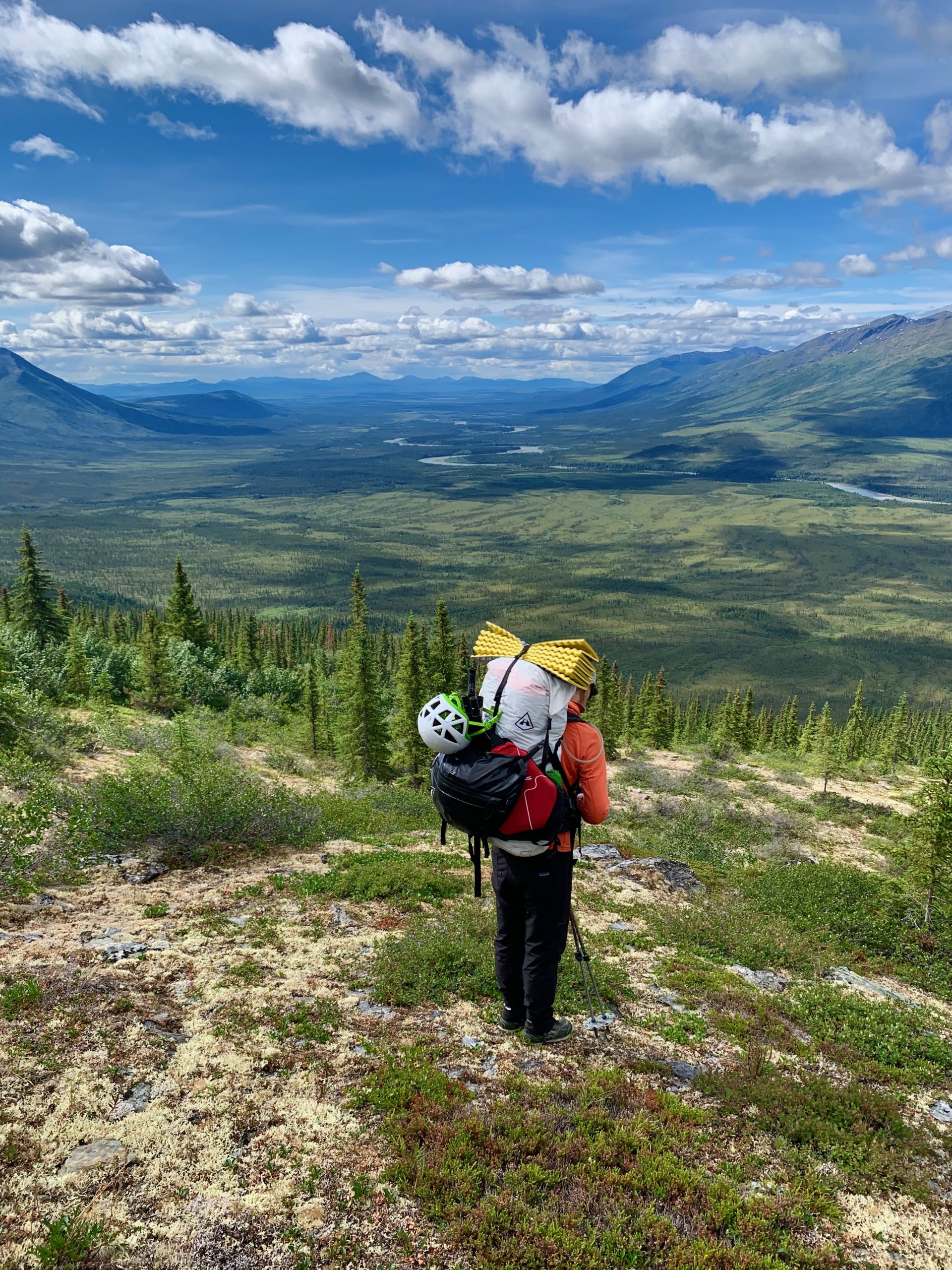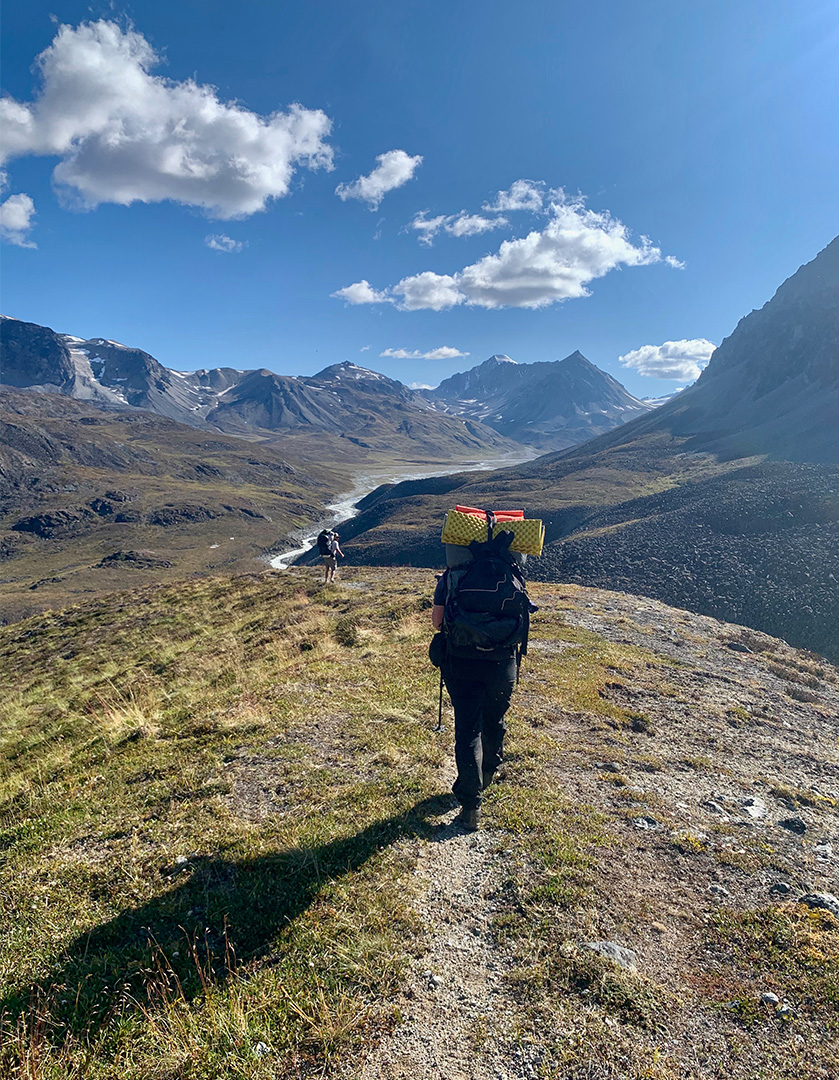18 Apr Getting Ready Pt 2 – Physical Preparation
WHETHER YOU ARE JOINING US ON A TUNDRA TRAVELS TRIP IN BACKCOUNTRY ALASKA, OR YOU’RE HERE DOING RESEARCH FOR AN INDEPENDENT BACKPACKING ADVENTURE, WE’RE STOKED TO HELP YOU GET READY FOR THE TRIP OF A LIFETIME.

This post focuses on your physical preparation for an adventure in backcountry Alaska. This is so important because the more functionally fit you are, the more fun you’ll have!
This is the second in a series of posts on getting ready for a trip in backcountry Alaska. We started with a post about gear because when your gear is dialed and you’ve brought the right things, it elevates a backcountry trip and you can focus on everything else.
Stay tuned for the third post of this series in which we’ll break down how to mentally prepare for a trip – just as important as your physical prep!

One of the greatest things about traveling in the backcountry is that the mountains give literally zero shits about how you look. Black, brown, white or purple? The mountains, unlike people, have no prejudice regarding the color of your skin. Wearing a jacket from last season or perhaps the last decade? No big deal as long as it keeps you warm. Muffin top above that waist belt? Doesn’t matter as long as your quads are up to the task of carrying you up that mountain.
While the mountains don’t care how you look, traveling through them does require a certain level of physical fitness. [Spoiler alert! How you look often does not equate with your actual fitness level.] And while we strongly believe that the outdoors are for everyone, off-trail travel carrying a heavy pack is not for all fitness levels. Many guests train prior to their trip because the better shape you are in, the more fun you will have. Ideally you’ll be able to train outdoors on or off-trail in a setting that mimics the conditions you’ll encounter on your trip. But we also know that lots of folks live in urban or suburban settings without access to outdoor space. For these folks, we love the Summer Strong program – specifically designed to get you ready for backcountry travel in Alaska in the comfort of your own home.
When getting ready for a backcountry trip you’ll need to be physically prepared in three key ways:
- Strength
- Stamina
- Hardening up the soft places – don’t worry, I’ll explain 😉
Strength
We’ve seen elite ironman triathletes get crushed by backpacking trips because they never bothered to train for the specific strength demands of carrying a heavy pack.
On a Tundra Travels trip you’ll likely be carrying a pack that weighs between 35-50 pounds. Are your legs up to the task of carrying that weight up and down mountainous terrain? The best way to train to carry a heavy pack is – you guessed it – carrying a heavy pack. Load your backpack up with that sack of beans you bought at Costco or a few jugs of water and go for a walk. Preferably that walk goes up and down hills, but climbing stairs or box steps with a heavy pack will help achieve your training goals as well.
Big muscles like quads and glutes (for going up and down hill) and lats and traps (for hoisting heavy packs) are obviously important. But equally important are all the small stabilizing muscles that help you maintain balance on uneven terrain. Any pre-trip training should also include exercises that target your core – the zone from your knees to your shoulders.
Stamina
We once guided two D1 football players on a backpacking trip. These dudes were so strong, but it was all explosive power. They couldn’t hike slow and steady for more than 20 minutes.
You don’t need to be fast to successfully travel through Alaska’s backcountry, but you do need staying power. On a typical backpacking trip we travel for up to 8 hours per day (with breaks at regular intervals). Does moving up to eight hours over difficult terrain sound possible for you? More importantly, does it sound fun?
If the first time you’ve ever hiked more than three hours is with a 40 pound pack over tussocks in backcountry Alaska – you’re likely to injure yourself. Building up gradually to this volume of exercise is important.
Hardening up the Soft Places
This sounds a bit weird, but is critically important. It doesn’t matter if you can squat 200 pounds or run up mountains if your feet disintegrate on day two of your trip. We often talk about “breaking in” your boots, but just as important is breaking in your feet. Wear your hiking boots before embarking on a backcountry trip helps to soften them up, but also builds calluses and helps to identify potential hot spots.
We once saw a client who had worn their hiking boots all over the sidewalks of New York, but never off pavement or uphill or on uneven surfaces. Even though the boots looked sufficiently broken in, their feet weren’t ready for the rough, uneven, ups and downs of backcountry Alaska and they had to be evacuated from their trip! Moral of that story, wear your boots, but as much as possible make sure you’re wearing them on terrain that mimics backcountry travel
Other “soft places” that could benefit from pre-trip hardening are your shoulders and hips. Your backpack straps shouldn’t be rubbing too much, but multiple days of wearing a heavy backpack can irritate the skin under your shoulder straps and under the front of your hip belt and along your low back. A few days of wearing a heavy pack (on a shorter backpacking trip or long day hikes) will help to toughen up these areas.
Getting ready for a backcountry trip in Alaska might sound intimidating – you need to be strong, build stamina and toughen up those soft spots! But training can be relatively easy. Load up a backpack and go for a weekend trip or long hike. Hike the stairs in your office building. Move for multiple hours at a time on consecutive days. If a structured training program is better for you, again we highly recommend the Summer Strong program – especially for those without access to hills, mountains or outdoor space. Enjoy your training and hopefully training for your trip turns out to be almost as fun as the actual adventure.
As always, if you have questions about our trips and physically preparing for them, contact us.



No Comments